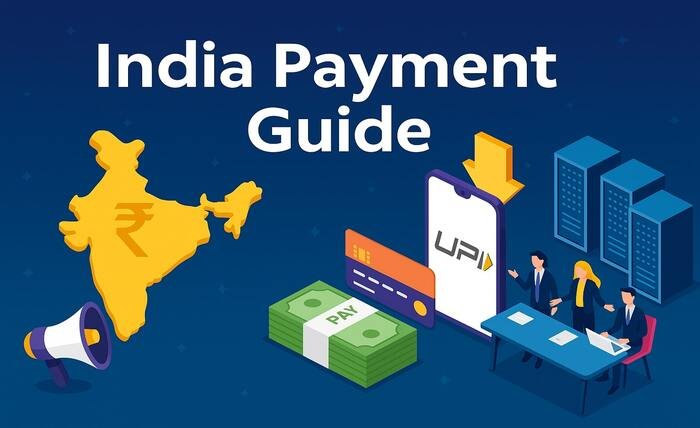India Payment(印度支付): Best Wallets and Apps to Use

India has become one of the world’s fastest-growing digital economies, driven by innovation in fintech, favorable regulations, and widespread mobile penetration. From digital wallets to UPI transactions, from QR payments to enterprise-level integration—India payment systems are at the forefront of global digital finance.
Whether you’re a foreign individual looking to open a bank account in India or a business aiming to implement secure and scalable payment solutions, understanding the infrastructure behind 印度支付 is essential. This blog post will walk you through key platforms, tools, regulations, and comparisons to help you confidently enter the Indian financial market.
Let’s dive deep into what makes India a unique and efficient digital payment powerhouse.
What Makes the India Payment Ecosystem Unique?
India’s digital transformation is powered by a combination of government-backed systems like UPI (Unified Payments Interface), a vast network of digital wallets, and strict financial regulations enforced by the Reserve Bank of India (RBI).
Unlike many countries where credit cards dominate, India thrives on mobile-first, real-time, low-fee payment methods that are available to virtually everyone, from urban professionals to rural farmers.
The India payment ecosystem includes:
- UPI transfers (P2P and P2M)
- Digital wallets (Paytm, PhonePe, Amazon Pay, etc.)
- Bank card transactions
- Enterprise payment gateway solutions
- Government compliance protocols (KYC, AML, RBI licenses)
This diverse landscape is supported by professional platforms like India Payment Guide, which offers tailored solutions for foreign individuals and global companies entering India’s digital economy.
India Payment for Individuals – How to Get Started
Whether you’re relocating for work, study, or business, you’ll need to set up payment capabilities quickly and securely. Here’s how:
- Open a Bank Account in India
Opening an Indian bank account is the first step toward using most 印度支付 (India Payment) methods, including UPI and wallets. Required documents include:
- Valid visa (student, employment, or business)
- Passport (original + copy)
- Proof of Indian address (utility bill, rental agreement)
- Local reference or employer/school letter
- Initial deposit (₹2000–₹10,000 depending on the bank)
Top banks recommended by India Payment Guide:
- HDFC Bank: Foreigner-friendly and widely accessible
- ICICI Bank: Known for smooth online banking setup
- State Bank of India (SBI): Government-backed and extensive branch network
Most banks activate UPI access once your account is verified and linked with your Indian mobile number.
- Activate UPI (Unified Payments Interface)
UPI is a cornerstone of modern 印度支付 (India Payment) systems. It’s a real-time bank-to-bank transfer mechanism that works 24/7.
Steps to activate UPI:
- Download a UPI-enabled app (BHIM, PhonePe, Google Pay, etc.)
- Link your Indian bank account
- Verify your registered mobile number
- Set your UPI PIN
- Create a VPA (Virtual Payment Address)
Once activated, you can send and receive payments instantly—without sharing bank details.
- Choose the Right Digital Wallet
Digital wallets play a key role in both consumer spending and merchant transactions. India Payment Guide offers an excellent comparison of popular wallets:
| Wallet | User Base | Strengths |
| PhonePe | 470M+ users | Best for UPI transfers and bill payments |
| Paytm | 450M+ users | Great for shopping, recharges, and QR pay |
| Amazon Pay | 50M+ users | Perfect for seamless Amazon checkouts |
| Google Pay | 150M+ users | Clean interface and fast bank linking |
| Mobikwik | 120M+ users | Includes wallet + credit line |
| Freecharge | 80M+ users | Offers deals, cashback, and more |
Each wallet is fully integrated with UPI and offers benefits like loyalty points, cashback, and lower transaction fees. Digital wallets are key players in the India payment evolution.
India Payment for Enterprises – Build, Integrate, and Scale
India Payment Guide isn’t just for individuals—it’s a vital partner for businesses and startups seeking to build custom payment systems in India.
Professional Payment System Construction
Companies expanding into India need more than just a bank account. They require integrated systems, local hosting, regulatory clearance, and seamless user experience. India Payment Guide supports businesses with:
- Full-stack integration: UPI, wallets, and cards
- Unified Bill Gateways
- Bank-level data encryption
- Real-time transaction dashboards
- Merchant KYC and anti-fraud systems
Whether you’re setting up an e-commerce gateway, mobile payment app, or subscription
Compliance and Certification Support
India’s regulatory framework is robust. Businesses must comply with requirements such as:
- RBI Payment Institution license
- PAN registration
- GST tax compliance
- PCI DSS security protocols
- Server deployment in India
- KYC/AML systems
India Payment Guide simplifies this process by offering consulting and technical support to obtain licenses and certifications in as little as 3–6 months.
Market Data and Industry Analysis
India Payment Guide provides exclusive insights into:
- Public vs private bank performance
- Digital payment penetration rates
- Platform performance (conversion, fees, settlement times)
- Consumer behavior and preferences
These analytics help optimize your 印度支付 (India Payment) setup based on target demographics and transaction patterns.
Cost Breakdown of India Payment Systems
Understanding transaction fees is essential, especially for high-volume users and merchants.
UPI:
- P2P transfers: Free
- P2M (merchant) collections: 0.5%–1%
- Limit: ₹100,000 per transaction
Debit/Credit Cards:
- Debit cards: 0.4%–0.9%
- Credit cards: 1.8%–3%
- International cards: Up to 4%
Wallets:
- Wallet top-up: Free
- Merchant payments: 0.5%–2%
- Wallet withdrawals: 0.1%–0.5%
Additional Charges:
- Gateway fees: ₹2–₹5 per transaction
- Settlement times: T+1 or T+3
- Refunds: Usually free
For businesses, combining UPI with card acceptance helps balance cost and coverage in the India payment environment.
Features That Make India Payment Guide Stand Out
Here’s why India Payment Guide is the go-to platform for Indian financial integration:
- Secure architecture with bank-grade encryption
- Support for over 200 payment platforms
- Detailed tutorials, charts, and comparison tools
- Multilingual service support
- Customized consulting for China-India transactions
- Ongoing technical updates and support
The platform bridges the gap between India’s complex finance ecosystem and international users looking to integrate with it confidently.
Final Thoughts
Whether you’re a solo traveler, a business owner, or a developer building fintech products—your success in India depends on how well you understand and implement local financial tools. From opening a bank account to enterprise-level architecture, the 印度支付 system offers unparalleled flexibility, speed, and scalability.
With India Payment Guide as your partner, you don’t need to guess your way through compliance, security, or technical integration. You’ll have the professional tools, insights, and support needed to thrive in one of the world’s most exciting digital economies.
Start your India payment journey today—intelligently, securely, and professionally.
FAQ – India Payment
What is UPI and how can I use it?
UPI allows instant transfers between bank accounts. Just download a UPI app, link your bank, set a PIN, and start transacting.
How can foreigners open a bank account in India?
Provide a visa, passport, address proof, and local reference. ICICI, HDFC, and SBI are popular choices.
Which wallet is better—Paytm or PhonePe?
PhonePe leads in UPI integration and merchant coverage. Paytm is feature-rich and ideal for businesses.
What are the legal requirements for payment integration in India?
RBI license, PAN, GST, PCI DSS certification, and local server deployment.
What are the typical fees for using India payment systems?
UPI is free for P2P, cards range from 0.4%–4%, wallets charge 0.5%–2%, and gateway fees apply.





